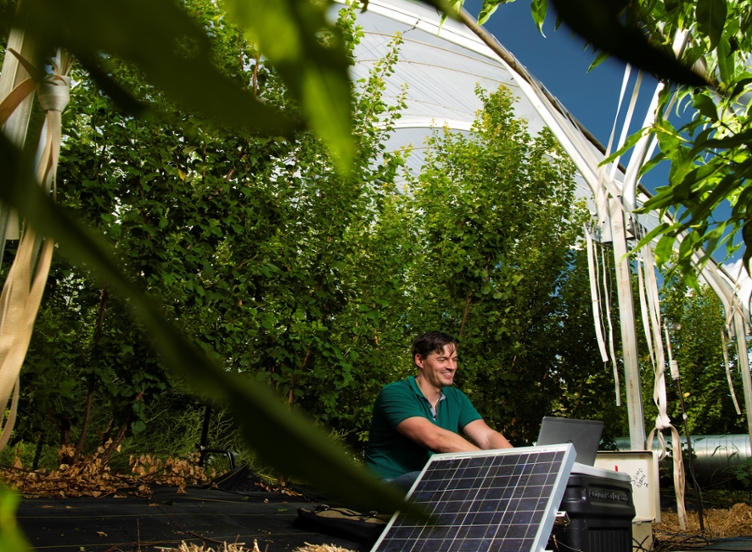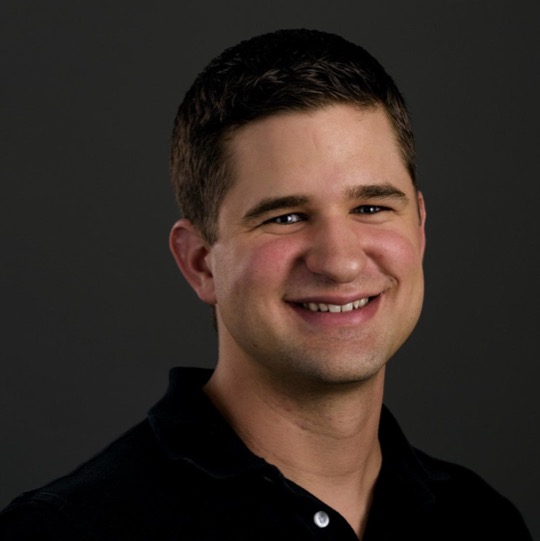Applied Terrestrial, Energy, and Atmospheric Modeling
Developing cutting-edge science and simulation capabilities to understand, quantify, and support coupled climate-Earth systems.
Contact Us
- Team Leader
- Alexandra Jonko

The team's computing capabilities couple climate to ecosystems.
The Applied Terrestrial, Energy, and Atmospheric Modeling (ATEAM)
We specialize in coupling multiple processes and feedbacks across a range of spatiotemporal scales, ranging from sub-meter processes across a single storm or fire event up to continental climate impacts through the 21st century.
Our capabilities:
- wildfire behavior modeling
- climate impacts on watersheds and ecosystems
- energy-related research, including carbon capture and storage, wind energy, geothermal exploration, and hydraulic fracturing
- subsurface hydrology and contaminant migration
Applications
| Terrestrial | Energy | Atmospheric |
|---|---|---|
| Dynamic couple climate-ecosystem-hydrology modeling | CO2 capture and storage (CCS) | Transport and dispersion for multiple applications, including source characterization of greenhouse gas emissions |
| Landscape-scale fires in urban and natural environments | Wind energy and turbine optimization | Coupled wildfire/atmosphere behavior |
| Subsurface migration of gasses | Geothermal exploration and risk analysis | Regional climate impacts at high latitudes |
| Hydro-climatic extremes | Carbon sequestration and reservoir modeling | Turbulence in the atmospheric boundary layer and biosphere atmosphere interaction |
| Unconventional fossil fuels including shale gas and CO2-enhanced oil recovery |
Key Projects
- Atmosphere to Electrons (A2e) initiative – Meso-to-Microscale Coupling: Develop a framework for coupling of mesoscale and microscale models (Large Eddy Simulation, LES) to improve the microscale representation of atmospheric turbulence for wind energy and dispersion phenomena applications.
- Atmospheric Greenhouse Gas Modeling: Atmospheric transport and dispersion modeling studies are applied to advancing understanding of how CO2 and CH4 emissions behave in the atmosphere. This work has aided in the interpretation of disparate observations by in-situ and remote-sensing instruments of known sources. Simulations have also contributed to research that detected anomalous methane concentrations from fugitive emissions.
- Critical Watersheds: Critical watersheds are watersheds that are critical to society (water, energy, food) and vulnerable to climate change. This project examines the impacts of climate-driven disturbances—drought mortality, wildfire, and insects/pathogens—on critical watersheds and the impact to society.
- Integrated Disturbance Science (IDS): IDS is the science of understanding, quantifying, and developing predictive science-based solutions for climate-driven disturbances and the impacts to society.
- Next Generation Ecosystem Experiment (NGEE) Arctic: Better climate modeling via advanced understanding of coupled processes in Arctic terrestrial ecosystem.
- Next Generation Ecosystem Experiment (NGEE) Tropics: Modeling disturbance effects, such as vegetation thinning. Improve climate models through an enhanced understanding of vegetation energy budget and plant thermoregulation. Improve the understanding of stream biogeochemistry of rain forest ecosystems.
- Underground Test Area (UGTA): The UGTA project, conducted by the National Nuclear Security Administration (NNSA), characterizes current groundwater contamination and produces model forecasts of the extent of future groundwater contamination at the former Nevada Test Site (now Nevada National Security Site or NNSS) where 928 underground nuclear explosions were conducted between 1957 and 1992, when the U.S. unilaterally adopted a testing moratorium.
- Underground Nuclear Explosion Science Experiment (UNESE): UNESE uses locations at the NNSS to detect and characterize clandestine nuclear tests at suspected foreign test sites where site access is denied. ATEAM staff are applying subsurface numerical models to subsurface gas pressure data and field-scale gas tracer experiments to characterize subsurface flow and transport properties near selected underground U.S. tests. The field data and associated laboratory experiments allow gas transport algorithms in the models to be tested and refined, and reduce uncertainty in models being applied at suspected foreign sites.
- Urban Fire Modeling: Investigate behaviors and impacts of large conflagrations in urban environment, caused by nuclear detonations, which can develop firestorms.
- US-China Clean Energy Research Center (CERC) Advanced Coal Technologies Consortium (ACTC): CO2 capture, utilization, and storage (CCUS) is a key technology in all major national and global climate mitigation policies. This project is significantly advancing CCUS technology in both China and the United States including advanced power generation, collaboration and knowledge sharing on a large-scale demonstration projects, CO2 utilization and storage, and system analysis and modeling.
Software and Simulation Tools
- Amanzi Advanced Terrestrial Simulator (Amanzi-ATS) - framework for solving ecosystem-based, integrated, and distributed hydrology. The Amanzi-ATS framework is specifically designed to manage model complexity for integrating surface/subsurface thermal hydrology models including plant dynamics. Capabilities are largely based on solving various forms of Richards equation coupled to a surface flow equation, along with the sources and sinks for ecosystem and climate models. This includes thermal processes (ice for frozen soils), evapotranspiration, albedo-driven surface energy balances, snow, biogeochemistry, and plant dynamics.
- FEHM - The FEHM (Finite Element Heat and Mass) code developed at Los Alamos National Laboratory simulates the subsurface flow and transport of multiphase fluids (water, air and CO2), heat and solutes in porous and/or fractured media. Solutes can undergo reactions with other dissolved or gaseous species, as defined by the user. The FEHM code is currently being applied to a wide variety of problems vital to national security, including CO2 sequestration, environment clean-up and non-proliferation.
- HIGRAD/FIRETEC/WindBlade - a high-fidelity coupled atmosphere-fire model designed for landscape scale (up to tens of kilometers). HIGRAD is a fully-compressible atmospheric hydrodynamics model that is applied to a wide range of atmospheric phenomena: catastrophic space shuttle accidents and subsequent effluents, coupled wildfire/atmosphere behavior, urban fire and dispersion, coupled atmosphere/vegetation heat and gas exchange for ecosystem modeling, hurricane intensification, coupled turbine/wind interaction in wind energy contexts, and fugitive gas/particulate matter dispersion. FIRETEC extends HIGRAD capabilities to address landscape-scale fire problems. FIRETEC integrates physics modules that represent combustion, heat transfer, aerodynamic drag, and turbulence with HIGRAD hydrodynamics to represent airflow and its adjustments to terrain, different types of fuel (vegetation or building materials), and the fire itself. WindBlade is another extension of HIGRAD that models wind turbine wakes, aerodynamic load and performance of wind turbines in a wind farm.
- Model Analysis ToolKit (MATK) - a python package that performs parameter studies, designs of computer experiments, uncertainty quantification, calibration, and other model analyses. MATK provides functionality to drive external simulators or sequences of simulators and is therefore simulator agnostic. MATK executes simulations concurrently on computer resources ranging from laptops to high performance computing resources.
- RAREDGE - a python-based software program designed to understand and quantify risk associated with geothermal exploration and production. RAREDGE incorporates site-specific data including a geological framework model, down-well temperature profiles and material parameters such as permeability and porosity (and their associated uncertainties to model resource properties). Results are visualized in the open-source Paraview software.
- SimCCS - an economic-engineering framework for optimizing CCS infrastructure decisions including where, how, and when to capture, transport, and inject/store CO2.
Our Researchers
Team Leader
|
|
Alexandra Jonko
|
Research Scientists
|
|
Adam Atchley
|
|
|
Katrina Bennett
|
|
|
Michelle Bourret
|
|
|
Alexander Josephson
|
|
|
Eunmo Koo
|
|
|
Rod Linn
|
|
|
Kurt Solander
|
Research Technologists
|
|
Daniel Livingston
|
|
|
Carl Talsma
|
Postdoctoral Researchers
|
|
Charles Abolt
|
|
|
Ryan Crumley
|

















